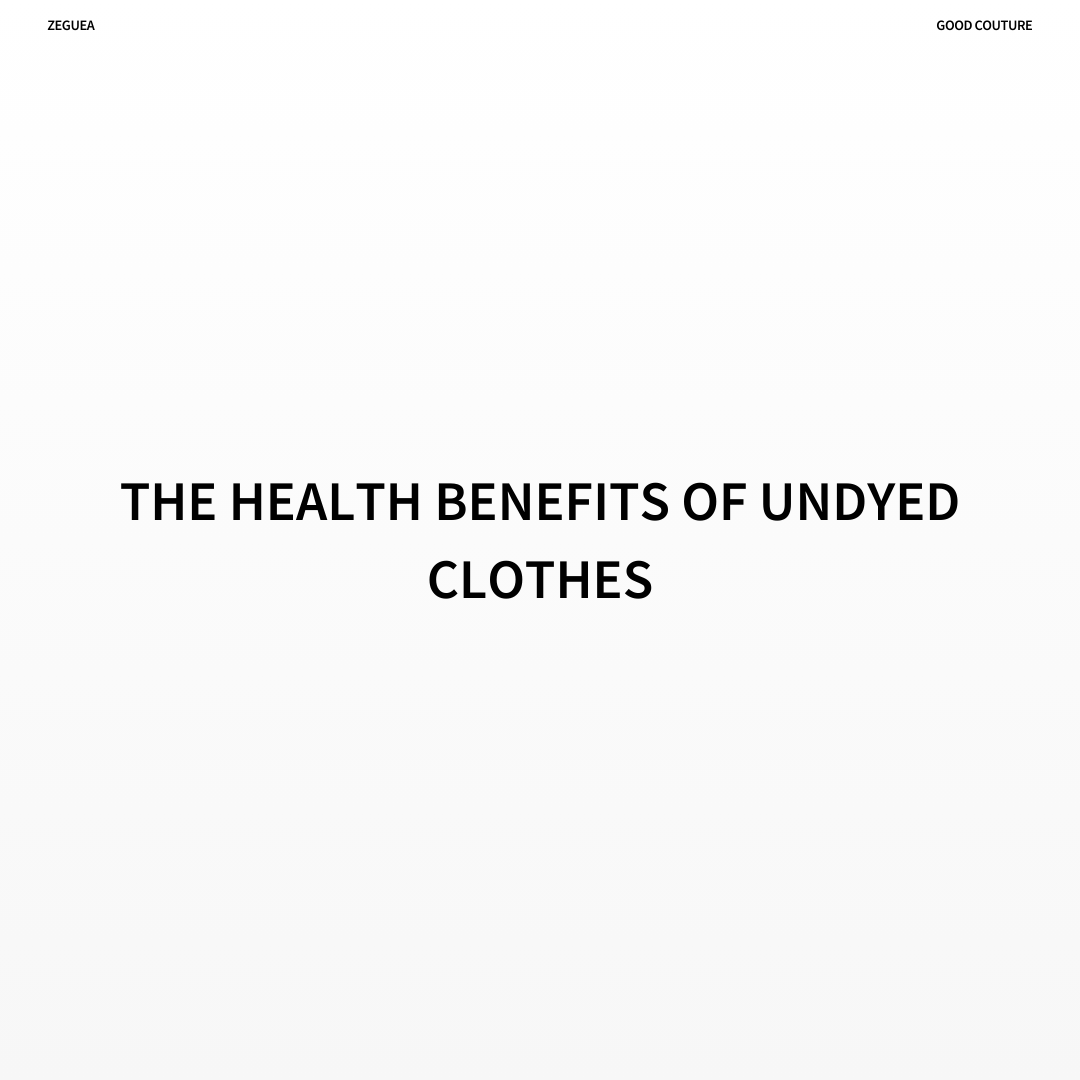
In recent years, there has been a growing awareness of the environmental and health impacts associated with the textile industry. As consumers become more conscious of their choices, the demand for sustainable and health-friendly clothing options has surged. Undyed clothes, made from natural fibers without the use of synthetic dyes, are emerging as a compelling choice for those seeking both environmental sustainability and personal well-being.
The Environmental Impact of Synthetic Dyes:
Conventional textile dyeing processes often involve the use of synthetic dyes, which can have detrimental effects on both the environment and human health. The discharge of chemical-laden wastewater from dyeing plants into rivers and oceans contributes to water pollution, harming aquatic ecosystems and posing risks to human health through contaminated water sources.
Additionally, the production of synthetic dyes is energy-intensive and involves the use of toxic chemicals. By choosing undyed clothes, consumers can play a role in reducing the environmental footprint of the fashion industry and supporting sustainable practices.
Natural Fibers and their Health Benefits:
Undyed clothes are typically crafted from natural fibers such as organic cotton, linen, hemp, and wool. These fibers not only contribute to eco-friendly fashion but also offer several health benefits.
- Hypoallergenic Properties:
Natural fibers are inherently hypoallergenic, making them an excellent choice for individuals with sensitive skin or allergies. Synthetic dyes and chemicals commonly used in conventional clothing production can cause skin irritation and allergic reactions. By opting for undyed clothes, consumers minimize their exposure to potential irritants, promoting skin health. - Breathability and Comfort:
Natural fibers have superior breathability compared to synthetic materials. They allow air to circulate freely, helping to regulate body temperature and reduce the risk of overheating. This breathability enhances overall comfort, particularly in warm climates, and reduces the likelihood of skin-related issues such as rashes and discomfort. - Chemical-Free Clothing:
Undyed clothes are free from the chemical residues often found in dyed garments. The absence of synthetic dyes means fewer chemicals come into contact with the skin, reducing the risk of allergic reactions and potential long-term health concerns associated with prolonged exposure to harmful substances.
Consumer Awareness and Responsible Fashion Choices:
As consumers become more educated about the environmental and health impacts of their choices, the demand for sustainable and undyed clothing options is expected to rise. Ethical and responsible fashion brands are responding to this demand by offering a range of undyed clothing options, emphasizing transparency in their production processes and the use of natural, biodegradable fibers.
Conclusion:
Undyed clothes represent a holistic approach to fashion that considers both environmental sustainability and personal well-being. By choosing clothing made from natural fibers and eschewing synthetic dyes, consumers can contribute to a healthier planet and enjoy the numerous benefits of chemical-free, hypoallergenic garments. As the fashion industry continues to evolve towards more sustainable practices, undyed clothes are poised to play a crucial role in shaping the future of responsible and health-conscious fashion.
References:
- Smith, P., & Fairclough, R. (2019). Environmental and health impacts of textile dyeing: A review. Sustainable Materials and Technologies, 21, e00108.
- Kaplan, S., & Kaplan, R. (2003). Health, supportive environments, and the reasonable person model. American Journal of Public Health, 93(9), 1484-1489.
- Yoon, J., Kim, J., & Kim, S. (2019). The effects of clothing fabric on skin physiological responses. International Journal of Clothing Science and Technology, 31(3), 321-331.